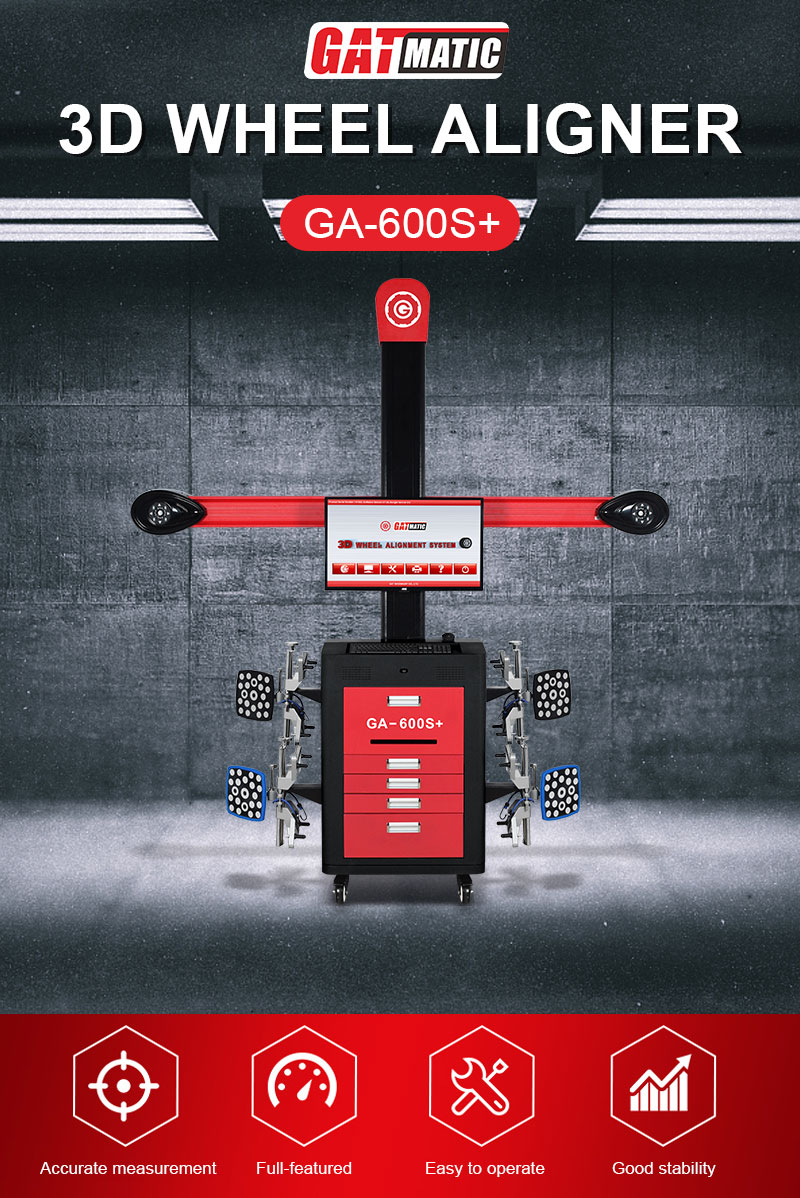Recent Blog
-
GATmatic Shows Industry-Leading Products at Automechanika Astana 2024
2024-04-17 -
How do advanced tire changers differ from traditional methods?
2024-04-16 -
How do advanced tire changers contribute to safety in automotive maintenance?
2024-04-16 -
What are the key features of advanced vehicle tire changers?
2024-04-15
How accurate are 3D wheel alignment systems compared to traditional methods?
Wheel alignment is a critical maintenance procedure that ensures the proper positioning of a vehicle’s wheels according to manufacturer specifications. This procedure is essential for optimizing vehicle performance, tire longevity, and overall safety. Over time, the methods used for wheel alignment have evolved from traditional manual techniques to sophisticated 3D alignment systems. This essay explores the accuracy of 3D wheel alignment systems compared to traditional methods, examining the advancements in technology and their impact on automotive maintenance practices.
I. Traditional Wheel Alignment Methods
Traditional wheel alignment methods have historically relied on manual techniques such as string alignment, two-wheel alignment, or four-wheel alignment using basic tools like alignment gauges and measuring tapes. These methods require significant expertise and time to perform accurately. For instance, two-wheel alignment typically involves adjusting the front wheels’ toe angle, while four-wheel alignment extends this process to all four wheels, addressing camber, caster, and toe settings. However, traditional methods are prone to human error, resulting in inconsistencies and potential inaccuracies.
II. Challenges with Traditional Methods
The limitations of traditional wheel alignment methods are evident in their reliance on manual measurements and subjective adjustments. Technicians must possess high levels of skill and experience to achieve precise alignment, often leading to varying results based on individual proficiency. Moreover, traditional methods are time-consuming and labor-intensive, making them less efficient for modern automotive servicing demands.
III. 3D Wheel Alignment Systems
In contrast, 3D wheel alignment systems represent a revolutionary advancement in automotive maintenance technology. These systems employ laser or camera-based sensors to precisely measure wheel angles and alignments. By utilizing sophisticated software, 3D alignment systems can provide comprehensive analysis and adjustment recommendations in a fraction of the time required by traditional methods.
IV. Advantages of 3D Alignment Systems
The primary advantages of 3D alignment systems lie in their accuracy, efficiency, and consistency. These systems eliminate manual measurement errors, relying instead on automated processes that enhance precision. Technicians benefit from intuitive software interfaces that guide alignment adjustments with real-time feedback, reducing the margin of error and improving overall workflow efficiency.
V. Components of 3D Alignment Systems
A typical 3D alignment system comprises advanced sensors, high-resolution cameras, and intelligent software algorithms. These components work seamlessly together to capture precise measurements of wheel angles, including camber, caster, toe, and thrust angle. The software then interprets this data, generating detailed alignment reports and adjustment recommendations for optimal vehicle performance.
VI. Accuracy Comparison: Traditional vs. 3D Systems
Research and comparative studies consistently demonstrate the superior accuracy of 3D wheel alignment systems over traditional methods. Studies have shown that 3D systems exhibit significantly reduced measurement errors and greater consistency across multiple alignments. For instance, a comparative analysis conducted by automotive industry experts revealed that 3D systems consistently achieved alignment accuracy within 0.1 degrees, far surpassing the capabilities of traditional methods.
VII. Real-World Performance and Customer Satisfaction
The adoption of 3D wheel alignment systems has transformed automotive maintenance practices, enhancing customer satisfaction and service quality. Vehicle owners benefit from precise alignments that improve fuel efficiency, tire wear patterns, and overall driving comfort. Moreover, the reliability and consistency of 3D systems contribute to increased customer confidence in automotive servicing establishments.
Conclusion
In conclusion, 3D wheel alignment systems represent a significant leap forward in automotive maintenance technology, offering unparalleled accuracy and efficiency compared to traditional methods. By leveraging advanced sensors and intelligent software, 3D systems enhance alignment precision while streamlining the servicing process. As automotive technology continues to evolve, the adoption of 3D wheel alignment systems will become increasingly prevalent, reshaping industry standards and delivering superior performance benefits to vehicle owners worldwide.
Get Access Now: https://www.gat-matic.com
FAQs
1. What is wheel alignment, and why is it important?
Wheel alignment refers to adjusting the angles of a vehicle’s wheels to ensure they are parallel to each other and perpendicular to the ground. It is crucial for vehicle performance, safety, and tire longevity. Proper wheel alignment enhances steering response, reduces tire wear, and improves fuel efficiency.
2. What are traditional wheel alignment methods?
Traditional wheel alignment methods include string alignment, two-wheel alignment, and four-wheel alignment using basic tools like alignment gauges and measuring tapes. These methods require manual measurements and adjustments by skilled technicians.
3. What are the limitations of traditional wheel alignment methods?
Traditional methods are prone to human error and can be time-consuming. They rely heavily on technician skill and experience, leading to inconsistencies in alignment results. Manual measurements may also lack precision, affecting overall accuracy.
4. What are 3D wheel alignment systems, and how do they work?
3D wheel alignment systems use advanced laser or camera-based sensors to capture precise measurements of wheel angles, including camber, caster, toe, and thrust angle. The data is analyzed by sophisticated software, which provides detailed alignment reports and adjustment recommendations.
5. What are the advantages of 3D wheel alignment systems over traditional methods?
3D alignment systems offer superior accuracy, efficiency, and consistency compared to traditional methods. They eliminate manual measurement errors, provide real-time feedback during adjustments, and streamline the alignment process.
6. How accurate are 3D wheel alignment systems compared to traditional methods?
Research and studies have shown that 3D wheel alignment systems consistently achieve higher accuracy levels (within 0.1 degrees) compared to traditional methods. They reduce measurement errors and provide more reliable alignment results.
Describe Your Needs In Detail!
We will carefully evaluate your needs and give professional solutions.




